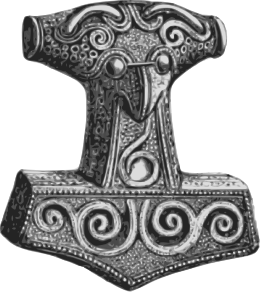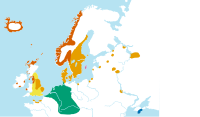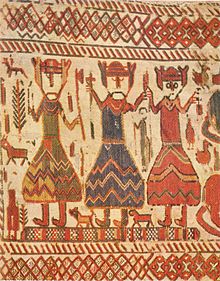
| Part of a series on the |
| Norsemen |
|---|
 |
| WikiProject Norse history and culture |

Old Norse religion, also known as Norse paganism, is a branch of Germanic religion which developed during the Proto-Norse period, when the North Germanic peoples separated into a distinct branch of the Germanic peoples. It was replaced by Christianity and forgotten during the Christianisation of Scandinavia. Scholars reconstruct aspects of North Germanic Religion by historical linguistics, archaeology, toponymy, and records left by North Germanic peoples, such as runic inscriptions in the Younger Futhark, a distinctly North Germanic extension of the runic alphabet. Numerous Old Norse works dated to the 13th-century record Norse mythology, a component of North Germanic religion.
Old Norse religion was polytheistic, entailing a belief in various gods and goddesses. These deities in Norse mythology were divided into two groups, the Æsir and the Vanir, who in some sources were said to have engaged in an ancient war until realizing that they were equally powerful. Among the most widespread deities were the gods Odin and Thor. This world was inhabited also by various other mythological races, including jötnar, dwarfs, elves, and land-wights. Norse cosmology revolved around a world tree known as Yggdrasil, with various realms existing alongside that of humans, named Midgard. These include multiple afterlife realms, several of which are controlled by a particular deity.
Transmitted through oral culture rather than through codified texts, Old Norse religion focused heavily on ritual practice, with kings and chiefs playing a central role in carrying out public acts of sacrifice. Various cultic spaces were used; initially, outdoor spaces such as groves and lakes were typically selected, but after the third century CE cult houses seem to also have been purposely built for ritual activity, although they were never widespread. Norse society also contained practitioners of Seiðr, a form of sorcery that some scholars describe as shamanistic. Various forms of burial were conducted, including both inhumation and cremation, typically accompanied by a variety of grave goods.
Throughout its history, varying levels of trans-cultural diffusion occurred among neighbouring peoples, such as the Sami and Finns. By the 12th century, Old Norse religion had been replaced by Christianity, with elements continuing into Scandinavian folklore. A revival of interest in Old Norse religion occurred amid the romanticist movement of the 19th century, during which it inspired a range of artworks. Academic research into the subject began in the early 19th century, initially influenced by the pervasive romanticist sentiment.